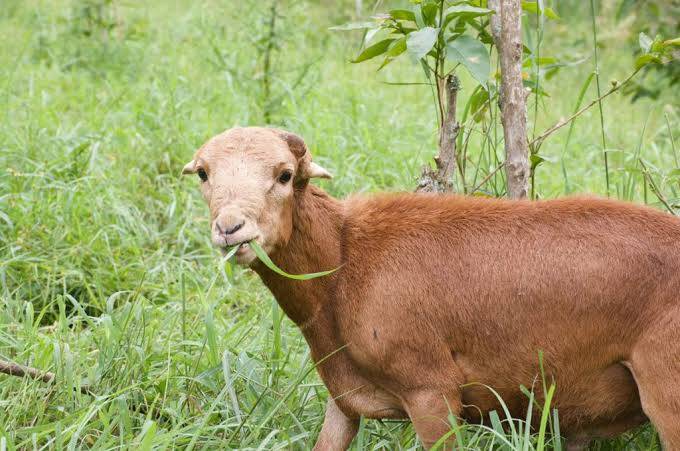Last updated on March 2nd, 2024 at 05:53 pm
Red Maasai sheep farming is a popular activity in Kenya, especially among the Maasai community.
This breed is known for its resilience and adaptability to harsh environments, making it a suitable choice for farmers in arid and semi-arid regions.
In this blog post, we will explore various aspects of Red Maasai sheep farming, including housing, feeding, pest and disease control, gestation and maturity periods, advantages and drawbacks, market for Red Maasai sheep products, suppliers and buyers of Red Maasai sheep in Kenya, and a list of products and uses of Red Maasai sheep.
Housing
The first aspect of Red Maasai sheep farming is housing. The sheep require a dry and well-ventilated shelter to protect them from extreme weather conditions.
The house should be clean and spacious enough to accommodate the sheep comfortably. It is also important to provide a separate space for lambing to avoid any infections or diseases.
Feeding
Feeding is an essential aspect of Red Maasai sheep farming. The sheep are mainly grazers and can survive on natural pastures.
However, it is important to supplement their diet with minerals and vitamins to ensure their health and productivity.
You can also provide hay or silage during the dry season when pastures are scarce.
Pest and Diseases
Red Maasai sheep are susceptible to various pests and diseases, including ticks, lice, worms, and respiratory infections.
It is crucial to implement preventive measures to avoid infestations and diseases.
Farmers should regularly deworm their sheep, provide clean water, and maintain proper hygiene to prevent infections.
Control measures to pest and Diseases
Control measures for pests and diseases include regular vaccinations, quarantine of sick animals, and proper hygiene practices. Farmers can also use acaricides to control tick infestations and insecticides to control lice.
Gestation and Maturity period
The gestation period for Red Maasai sheep is around five months, and the maturity period is approximately six to eight months. The sheep can produce two to three lambs per year, making them a profitable breed for farmers.
Advantages and Drawbacks of Red Maasai Sheep keeping
The advantages of Red Maasai sheep farming include their adaptability to harsh environments, high resistance to diseases and parasites, and their ability to produce multiple lambs per year.
While its drawbacks include their slow growth rate, low weight gain, and poor meat quality.
Market for Red Maasai Sheep in Kenya products
The market for Red Maasai sheep products in Kenya includes meat, wool, and skin.
The meat is lean and has a unique taste, making it popular among consumers.
Its wool is used to make traditional garments, while the skin is used to make leather products such as shoes and bags.
Suppliers and buyers of Red Maasai sheep in Kenya
Suppliers of Red Maasai sheep in Kenya include individual farmers, cooperative societies, and livestock traders. Buyers include meat processors, wool and leather factories, and individual consumers.
List of products and uses of Red Maasai Sheep
The products and uses of Red Maasai sheep include:
- Meat: The lean meat is used for human consumption.
- Wool: The wool is used to make traditional garments such as shukas and khangas.
- Skin: The skin is used to make leather products such as shoes and bags.
- Fertilizer: The sheep’s manure is used as organic fertilizer for crops.
- Income: Red Maasai sheep farming provides a source of income for farmers.
In conclusion, Red Maasai sheep farming is a viable and profitable venture for farmers in Kenya. The breed’s resilience and adaptability make it a suitable choice for arid and
